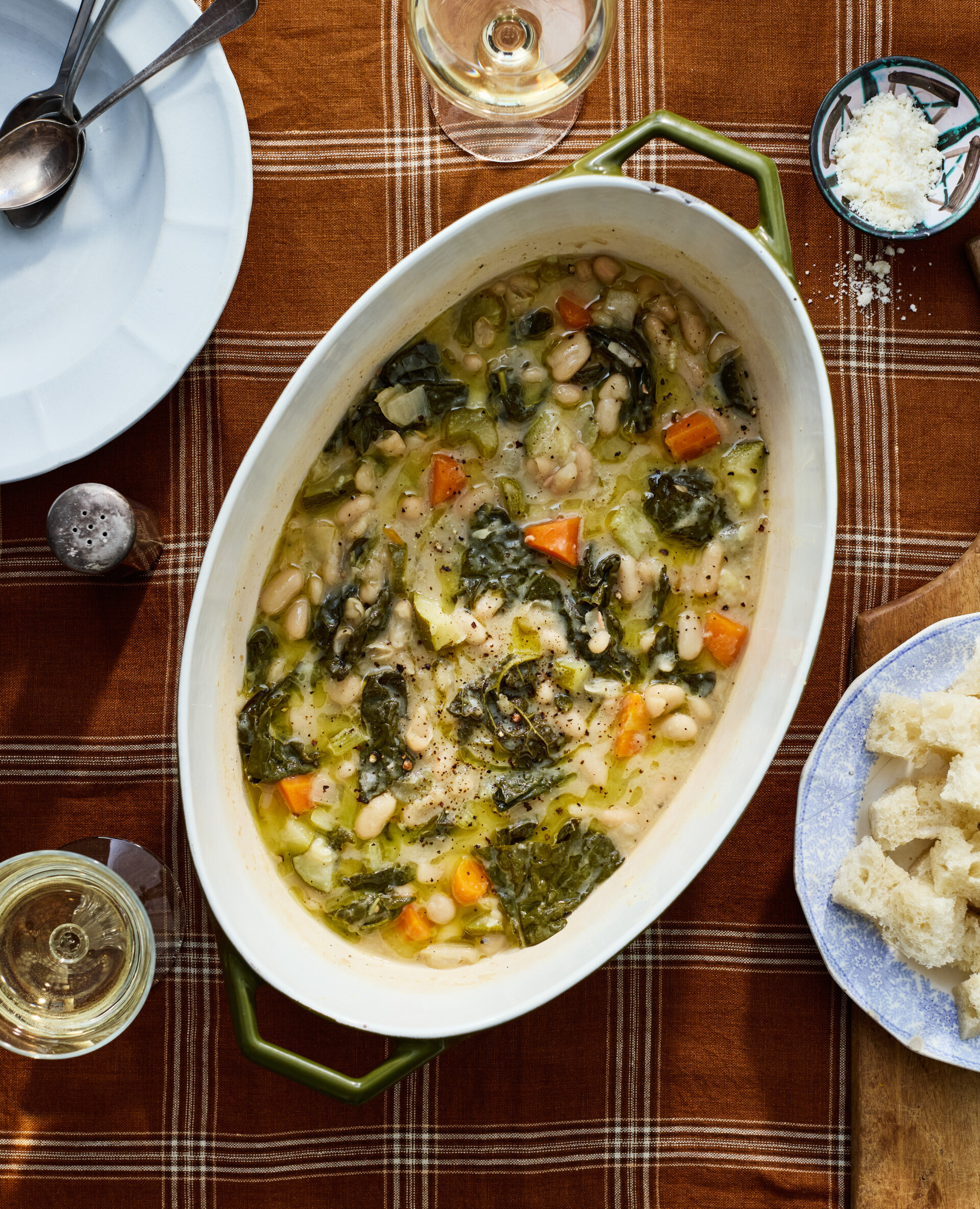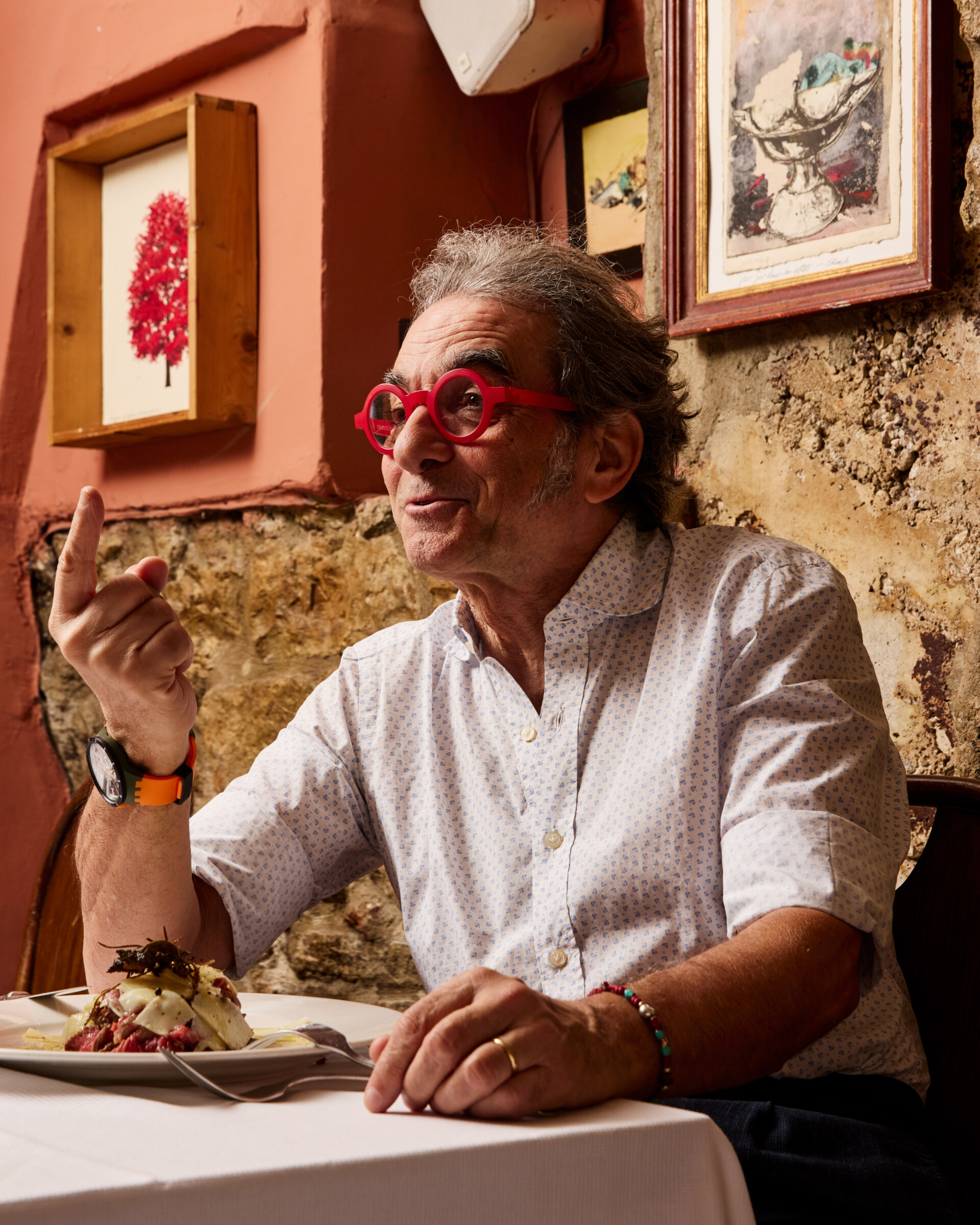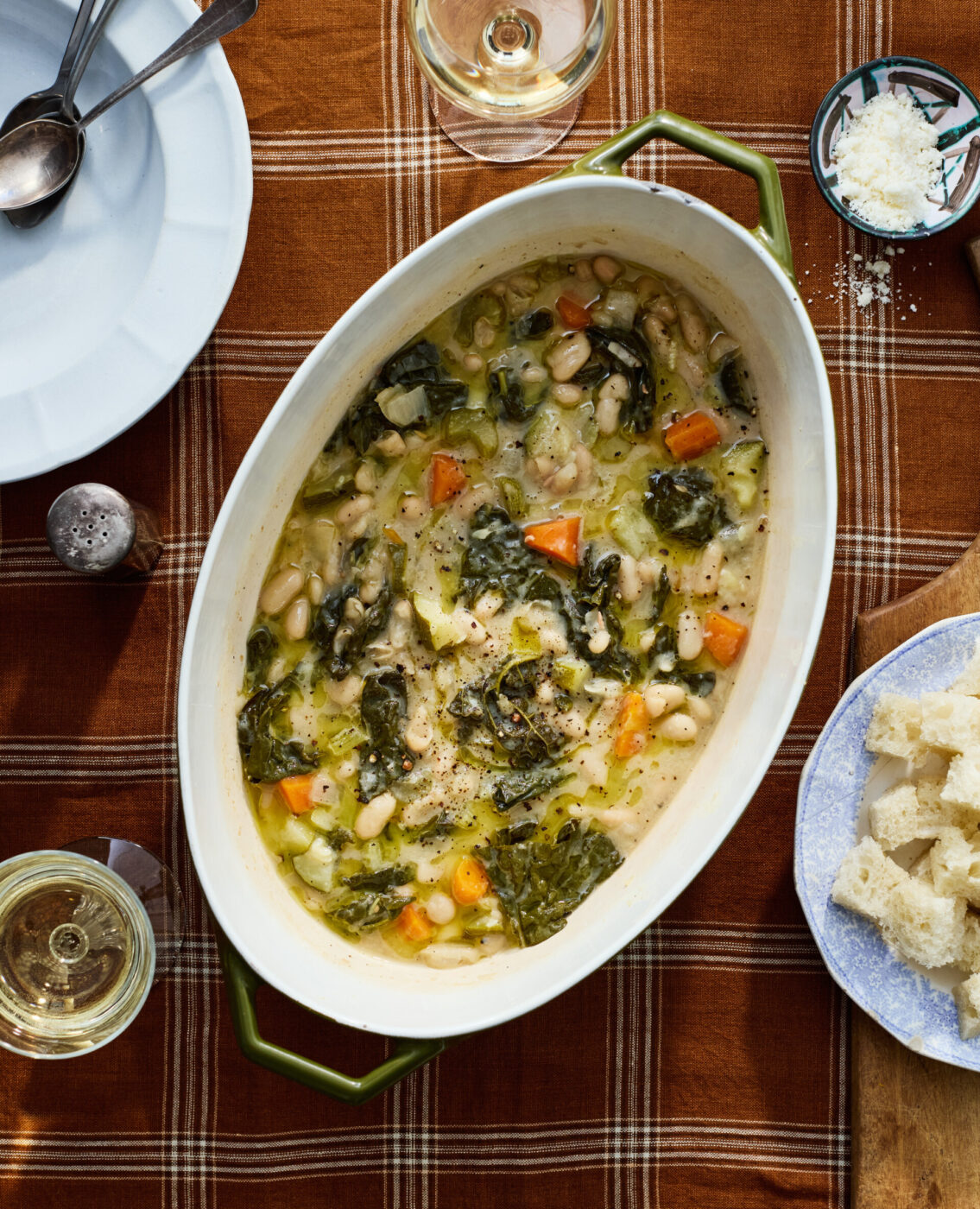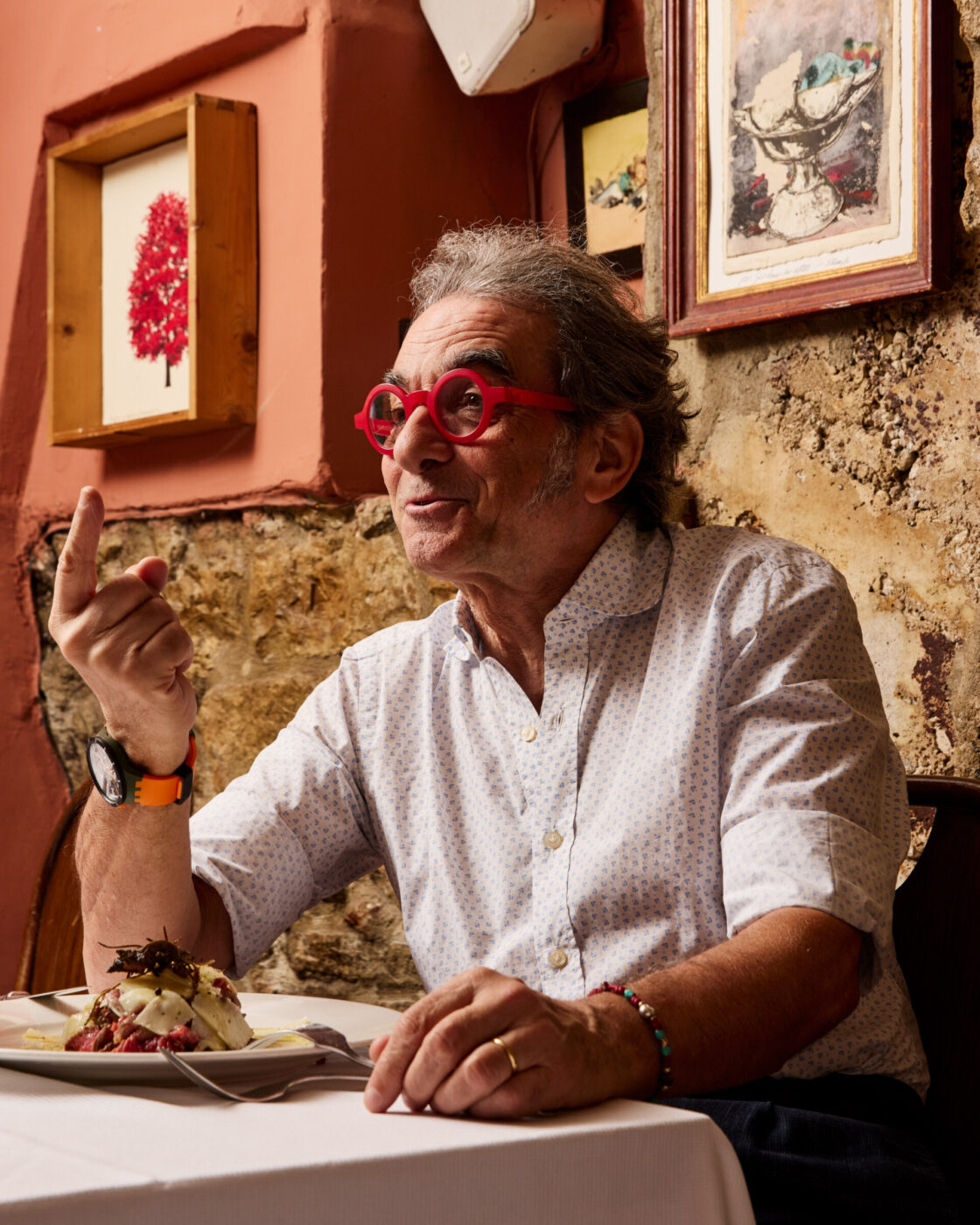Editor’s Note: The following comes from the pages of 20 Amici – 40 Ricette: Friends and Food from the Heart of Chianti, written by John Bersani, an Italian-American who’s been living in Gaiole-in-Chianti for the last 20+ years, and photographed by Nico Schinco (who’s also an Italy Segreta contributor!). “We came for the food, the wine, the culture, and the natural beauty. We’ve stayed because of the people,” writes Bersani of his small hilltop town. 20 Amici – 40 Ricette is dedicated as much to the former as it is to the latter, with the eponymous 40 recipes contributed by 20 Chianti locals, from top chefs to home cooks. The result is a mouth-watering cookbook that also reads as a rolodex of the heart-filled personaggi (characters) that call Chianti home. It will be published in 2025 by The Collective Book Studio.
When I tell friends that the famous Clint Eastwood film, A Fistful of Dollars, was conceived, written, and produced in Italy (though filmed in Spain), they find it hard to believe. What could be more American than classic western films, with their iconic portrayals of rugged lawmen, gunslingers, and tumbleweed-strewn towns terrorized by ruthless gangs?
But the fact is, throughout the mid-’60s and early ’70s, Italy was a dominant force in the production of so-called “Spaghetti Westerns”–films based on the legends of the western U.S. but produced in Italy and Spain far more cheaply than could be done in the U.S. Men like the Italian film director Sergio Leone, who produced and directed A Fistful of Dollars, and Ennio Morricone, who wrote the musical score for the film, built the foundation of their careers in the genre. It’s a cultural phenomenon that leaves you shaking your head and smiling. Italian ingenuity and creativity at work.
Fast-forward to today. In the wilderness of coastal Tuscany, cult followers of the Spaghetti Western genre are making new films. They’re working on shoestring budgets aided by the latest cinematographic technology, but sparing no expense in seeking out original costumes and props. My good friend Saverio Monni, the brother of Giordano of Buca dell’Orafo fame, is one of these new-wave Italian western actors.
By day, Saverio is a professional waiter. He’s charismatic, passionate about life, mischievous, and just a little bit crazy in that good-crazy kinda way. In the evenings, having earned the right after 30 years of hard work to skip the Buca’s nightly dinner service, he’s either spending time with his wife and daughter or rehearsing for his next theatrical production. Acting is his passion. Over the years as customers of the Buca, Saverio has introduced us to some Florentine classics.
When Saverio is not working or acting, he’s usually on his bicycle. Italians are crazy for cycling. While soccer is the undisputed king of Italian sports, one could easily make the case that cycling is next in national popularity. On Saturday mornings throughout Chianti, groups of Italian men can be seen cruising along the steep, winding roads of the Tuscan countryside at hair-raising speeds, many aboard tricked-out racing bicycles that can exceed $10,000 in value. Saverio takes his love of the sport and his fitness obsession to another level by commuting by bicycle from his home on the outskirts of Florence to the Buca every day–12.5 miles (20 km) each way. That’s more than 25 miles (40 km) a day. All that riding demands sustenance. And not many dishes pack a better punch of satisfying sustenance than la ribollita.

La Ribollita; Photo by Nico Schinco
SAVERIO’S RIBOLLITA (TUSCAN BLACK KALE AND BEAN SOUP)
No book about regional Tuscan cuisine would be complete without a recipe for the classic ribollita. It’s a hearty vegetable soup with cannellini beans and cavolo nero (Lacinato kale) taking the starring roles. Once it’s finished, the soup is usually fortified by the addition of Tuscan bread. And in the most traditional renditions, it’s left to cool and meld together overnight, then reheated in a pan (the literal translation of ribollita is “reboiled”) just before serving.
Personally, I prefer my ribollita without the bread, and many restaurants offer the dish “con or senza pane,” with or without bread. Of course, purists will say that without the bread it’s no longer ribollita, it’s just a “minestra” (plain old soup). But, hey–it’s all about personal preference.
Serves 6
INGREDIENTS
- 3 medium carrots
- 4 medium zucchini
- 3 medium yellow onions
- 4 medium celery stalks
- 1/2 cup (120 ml) high-quality extra-virgin olive oil
- 2 to 3 tablespoons (30 to 45 g) butter
- 3 large bunches Tuscan black kale (cavolo nero)
- 6 (1-lb/455-g) cans cannellini or navy beans (preferably packed in their own juices)
- 4 or 5 cherry tomatoes
- 5 cups (1.2 L) chicken or vegetable stock or water
- Kosher or coarse sea salt and freshly ground black pepper
- 3 or 4 slices 2- or 3-day-old rustic country bread (optional)
- Parmigiano-Reggiano cheese (optional)
PREPARATION
- Cut the carrots, zucchini, onions, and celery into equal bite-size pieces. Place the vegetables into a stockpot large enough to hold the finished soup. Add the olive oil and butter to the pot. Warm the contents of the pot over medium-low heat. You want the vegetables to begin to soften and become translucent—they should not caramelize or take on color.
- Meanwhile, chop the Tuscan kale into 1-inch (2.5-cm) wide strips. Add the chopped kale to the pot and stir to combine. Continue cooking the mixture until the kale has wilted and melded in with the rest of the vegetables.
- Drain and rinse the beans thoroughly. Add two-thirds of the beans to the vegetable mixture and stir well to combine. Quarter the cherry tomatoes and add them to the pot. Add the stock to the pot until the liquid just covers the vegetables. Bring the pot to a boil and then lower the heat to a steady simmer. Add salt and pepper to taste.
- Place the remaining one-third of the beans in a bowl or tall container and puree to a smooth consistency with an immersion blender. If you don’t have an immersion blender you can use a regular blender or a food processor. Or you can just break the beans up and mash them using a fork or other utensil. Add the bean puree to the pot.
- Allow the entire mixture to simmer slowly until the vegetables and kale are soft and the liquid has taken on the consistency and taste of a broth, about 1 hour. If the soup seems too thick, add a bit more water. If it seems too thin, continue to cook and reduce the liquid a bit longer. Taste for seasoning and add more salt and pepper if needed. If serving without the addition of bread, ladle the soup into individual serving bowls, drizzle with extra-virgin olive oil, and grate some Parmigiano-Reggiano cheese on top, as an option.
- If using bread, remove and discard the crust and cut the remaining interior crumb of the bread into small pieces. Add the bread to the soup and stir to combine well. Continue to cook until the bread has broken down, incorporated itself into the soup and thickened the mixture. Ladle the soup into individual serving bowls, drizzle with extra-virgin olive oil, and grate some Parmigiano-Reggiano cheese on top, if using.
Note: The soup can also be cooled, stored in the refrigerator overnight, and reheated in a pot the next day. The “with bread” version is also sometimes reheated in individual portions over high heat in a nonstick pan to produce a crustier result.
Make It a Meal: There’s nothing like a big, stand-alone bowl of this soul-satisfying soup on a cold winter’s evening. The only other thing you’ll want are some grilled slices of country bread smothered in olive oil and a glass of your favorite red wine.


